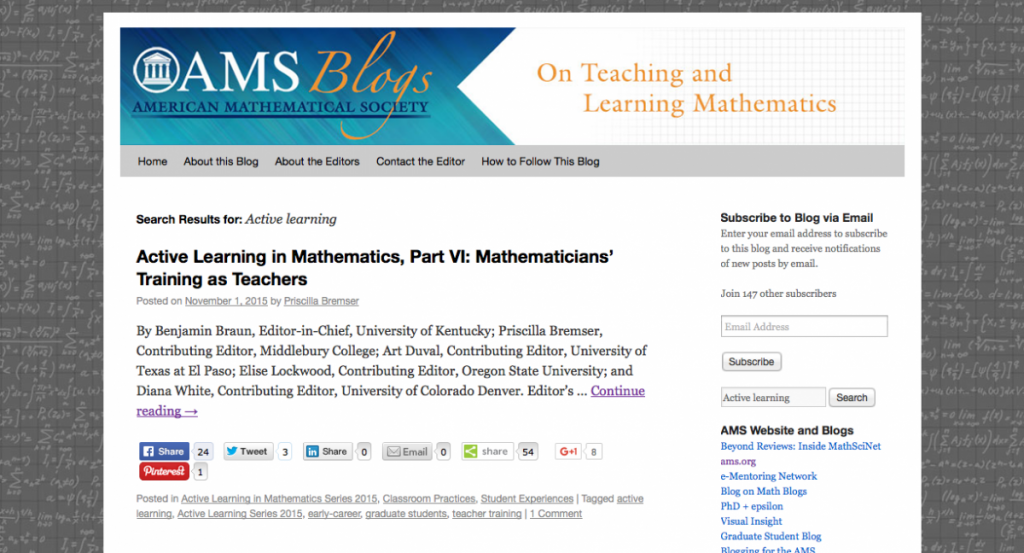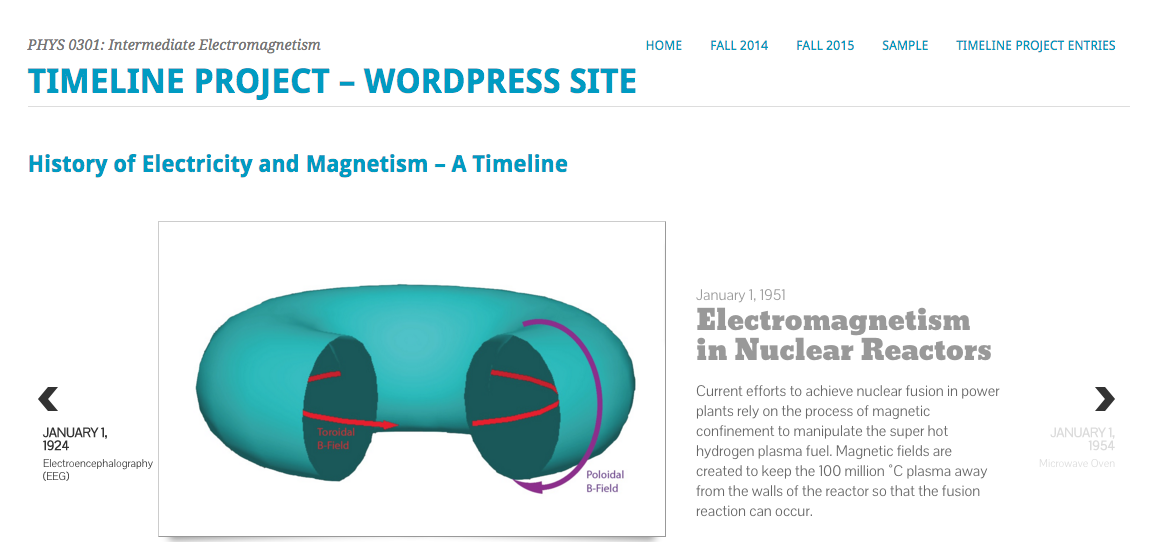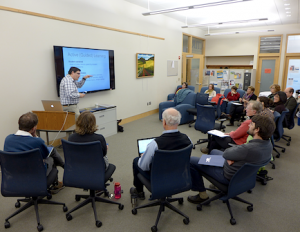On October 21 at 1:30pm ET, the Office of Digital Learning and the Digital Learning Commons will be hosting a talk by Audrey Watters, internationally recognized education writer and speaker. Audrey will give a talk called “Attending to the Digital / Reclaiming the Web“, which will focus on issues of digital identity and ownership, and on the Domain of One’s Own movement that inspired Middlebury’s own MiddCreate. On Middlebury Campus, we will gather to watch and discuss the livestream at 1:30pm ET in the Davis Family Library, room 105A. For more information, visit the Office of Digital Learning blog.
Category Archives: pedagogy
Canvas Is Coming
Starting in Fall 2016, Middlebury will adopt Canvas for use across the institution—the undergraduate College, the Institute in Monterey, the summer Language Schools, the Bread Loaf School of English, and the Schools Abroad. And while the institution’s Moodle instance will remain intact until January, for most people accustomed to using Moodle, the change may come with a few hard turns. And even for those new to using any learning management system, the affordances of Canvas may go undetected. Additionally, the speed at which teachers and students must become familiar with a new platform can mean we don’t take full advantage of what a new digital tool offers.
Fortunately, the Office of Digital Learning is here to offer some pedagogical support for new and continuing Canvas users. Take a look at their blog post about some of the ways Canvas can be a great online and classroom tool.
Using Multimedia Resources to Personalize Historical Perspective
When working with historical artifacts students try to relate to the piece from within the context of its time. This can be challenging to do, however C3 Post-Doctoral Fellow in Theatre, Nathaniel Nesmith has come up with a unique way to help students view artistic work with the aid of the artist’s point of view.
In this article Nathaniel describes to Librarian Amy Frazier how he utilized multimedia resources to help students relate to and study playwrights by listening to audio interviews. Using this method Nathaniel was able to help students build a connection to an individual living in a different historical context in an engaging way.
Learning within a teacher community
Do you remember that feeling when you first walk into a class outside your comfort zone? Do you remember that exact moment when you feel your muscles tense and you wonder whether you’re going to be lost from day one, or whether you’ll hang in there through the first few weeks? I have to admit, I often had that feeling in math class, but recently I had the opportunity to meet with a Mathematics faculty member who reminded me of those teachers who are able and determined to see all students succeed regardless of their comfort-level with the content.
Professor Priscilla Bremser was kind enough to take some time during j-term to meet with me to discuss the ways in which she has transformed her math classes over several years teaching at Middlebury. In this article Professor Bremser outlines her inspiration, thought process and methods for making several changes in her classes, as well as her reflection on student responses and connection to the larger mathematics teaching community in Vermont and beyond. Priscilla’s teaching story is one of connection between educators as well as a deep attention to her students’ instructional needs.
Using Animation to Explain
Some course concepts can be trickier for students to understand than others. These “muddy points” are often the areas where technology provides us with some tools that can approach the content from a different angle, and make a concept more visible. In this story, Vickie Backus, Senior Associate in Science Instruction in Biology, explains the iterative process she used to create and then fine tune an animation to help her students better understand the concept of how natural selection can lead to evolution.
Vickie is a member of our flipped classroom community of practice and will be presenting additional information about this process at a meeting on Tuesday April 5th. We know this is a ways off, but you can sign up here to reserve a spot and receive an email reminder prior to her session.
Our next meeting will be on March 15th at 12 where we will discuss student considerations for flipped classrooms with ADA Coordinator Jodi Litchfield and Director of Learning Services, Yonna McShane. Additional details can be found here.
Using Timelines to Help Create Context for Learning
Think back to the most confusing learning experience of your life. Did you feel like you understood the context of what you were learning? When Assistant Professor of Physics Michael Durst began teaching PHYS 0301: Intermediate Electromagnetism he envisioned an assignment where “students would explore more deeply the history of electricity and magnetism” as well as the “chronology of…experiments which led to our current understanding of electricity and magnetism.”
Through a discussion with Academic Technology staff in the library, Michael decided that the JS Timeline plugin for WordPress would allow a means for students to place people, discoveries and real-world applications of electromagnetism in the context of time.
In this article Professor Durst describes his process of creating and revising the assignment as well as how it has become a collaborative class resource among multiple cohorts of students.
How Questions Guide Learning
As Assistant Professor of Biology and Neuroscience Glen Ernstrom read articles about the effectiveness of active learning activities in the sciences he began to consider how he could integrate some of this teaching methodology into his classroom.
In this article Glen explains how he uses process-oriented guided inquiry lessons to help students work through some of the more difficult concepts in his class. Using methods to encourage metacognitive understanding Glen guides students through activities that allow them to work
“…in groups and compare[ing] the results of their work in class, they can measure themselves with their peers and see how well they are in doing. They get immediate feedback on their understanding.”
Glen was kind enough to share links to supporting research and resources to help others learn more about POGIL and how they can try it out in their own classes as well. To read the full article and view resource links please visit the Teaching at Middlebury site here.



